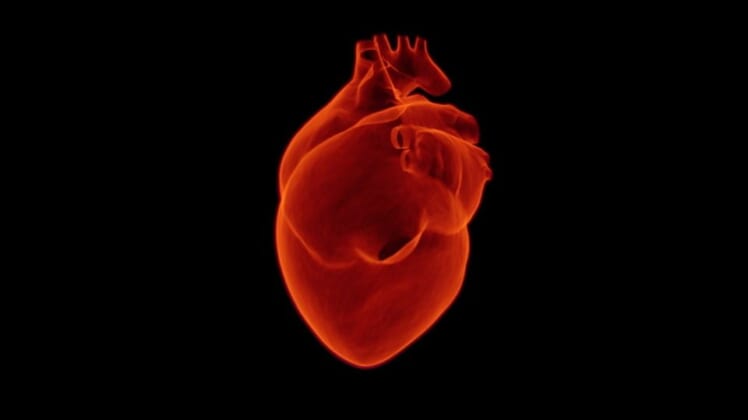
Your heart, a small fist-sized pump in your body, has an amazingly big job. Through a series of electrical impulses, chambers and valves, it pumps thousands of gallons of blood through your body every day. Sometimes, though, the heart can become damaged or suffer trauma that throws it off beat. When that happens, a dangerous cardiac arrhythmia can form, and you may need outside intervention to keep it in check.
The Basics of Cardiac Arrhythmia
According to the American Heart Association, this amazing muscle will beat more than 2.5 billion times throughout an average person’s lifespan. Normally, an adult’s rate of heartbeat will fall between 60 to 100 times per minute.
If your heart rate falls below that range, you have what’s called bradycardia. A racing heart rate (faster than 100 times per minute) is called tachycardia.
These heart conditions happen when there’s a change to the normal rhythm, often caused by trauma, infection or other damage to the heart. For instance, the body’s natural pacemaker called the sinoatrial node (SA node) may stop working properly, causing other parts to control the heart’s rhythm.
The change isn’t always harmful, though. At times, the pause or faster beat may be so small that it doesn’t affect the heart’s overall function. Doctors consider these small abnormalities harmless.
Many times, however, arrhythmia may decrease how effectively the heart pumps blood through the body. Depending on how abnormal the rhythm, it could even be life-threatening.
Common signs of cardiac arrhythmia are a fluttering feeling in the chest, chest pain or discomfort, lightheadedness, weakness, shortness of breath, fainting or suspected abnormal heartbeat.
Standard Treatments
The standard treatments for cardiac arrhythmia are usually invasive; so your doctor will need to take great care during diagnosis. If there’s a chance that the arrhythmia is not causing problems with blood flow, your doctor should get as much information as possible before causing further trauma to the heart.
First, you’ll likely undergo an electrocardiogram (EKG) to pattern the heart’s electrical impulses. Your doctor may also opt for monitors, an echocardiogram or a loop recorder—all meant to record or monitor the heart for one or more days.
Then, your doctor will recommend a variety of procedures. For bradycardia, you will likely need a pacemaker since medication or other means don’t effectively speed up the heart rate.
If you have tachycardia, your doctor will usually prescribe medications to control the abnormally fast or erratic rhythm. Many times, patients will need a catheter ablation in which a surgeon will thread a series of catheters through blood vessels in the heart.
The catheters will then use heat or cold to block certain electrical impulses. This is often a life-saving step, but it can cause anxiety and trauma for the patient as they feel the life-saving measure kick in one or more times within a short period.
Another method that your doctor may attempt first is to deliver shock impulses to the heart to reset the rhythm. They may achieve this procedure through patches or even medication. However, many patients with severe arrhythmia will see their condition return, even if the shocks work initially.
Although these methods may seem frightening or invasive, many people have effectively controlled cardiac arrhythmia with them. Only when these measures don’t work do doctors consider alternative or less-researched options.
A New Approach
One alternative method that doctors are currently researching involves an unthinkable solution—radiation. Shocking? It’s not as terrible a suggestion as you might think.
Again, standard treatments for cardiac tachycardia specifically use invasive procedures. For this new radiation therapy, cardiologist Phillip Cuculich, MD, and radiation oncologist Clifford Robinson, MD, from the Washington University School of Medicine have trialled a completely non-invasive alternative.
What’s the big deal about CBD?
The therapy was developed by the Washington University biomedical engineer Yoram Rudy, PhD. According to the specialists, their method includes an intensive imaging and mapping procedure that informs them on both the scarring and electrical movements of the heart.
They can then use this information to trace the origin of the arrhythmia and deliver radiation to very specific heart tissues. Once the imaging is complete, the patients undergo a simple procedure that takes 10–15 minutes and culminates an entirely non-invasive process.
According to a Washington University report, the doctors recently tested their method on five patients. These patients had undergone usual methods without lasting results, and several were over the age of 60 with multiple health risks.
Of these, one patient over age 80 died likely due to unrelated complications, and another received a heart transplant. Two patients have lived successful and unassisted lives for two years after their radiation therapy. All patients showed a stark decrease in arrhythmia events, dropping to nearly zero after six weeks.
While the researchers are encouraged by this success for such a dangerous condition, they do continue to offer it only when other options have been exhausted. Understandably, they are still following previous patients to see the long-term effects of radiation on the heart. To date, they have performed their pioneering procedure on over 20 patients and are pursuing clinical trials for further research.
Because the heart’s function is so important to the body, any abnormality in rhythm can have serious consequences on the body. Thankfully, not all arrhythmias are life-threatening. If you suspect an irregularly slow or racing heartbeat, you should work with your doctor to determine its extent. In the meantime, rest assured that new, non-invasive therapies like radiation are being developed to increase the safety and effectiveness of arrhythmia treatment.
